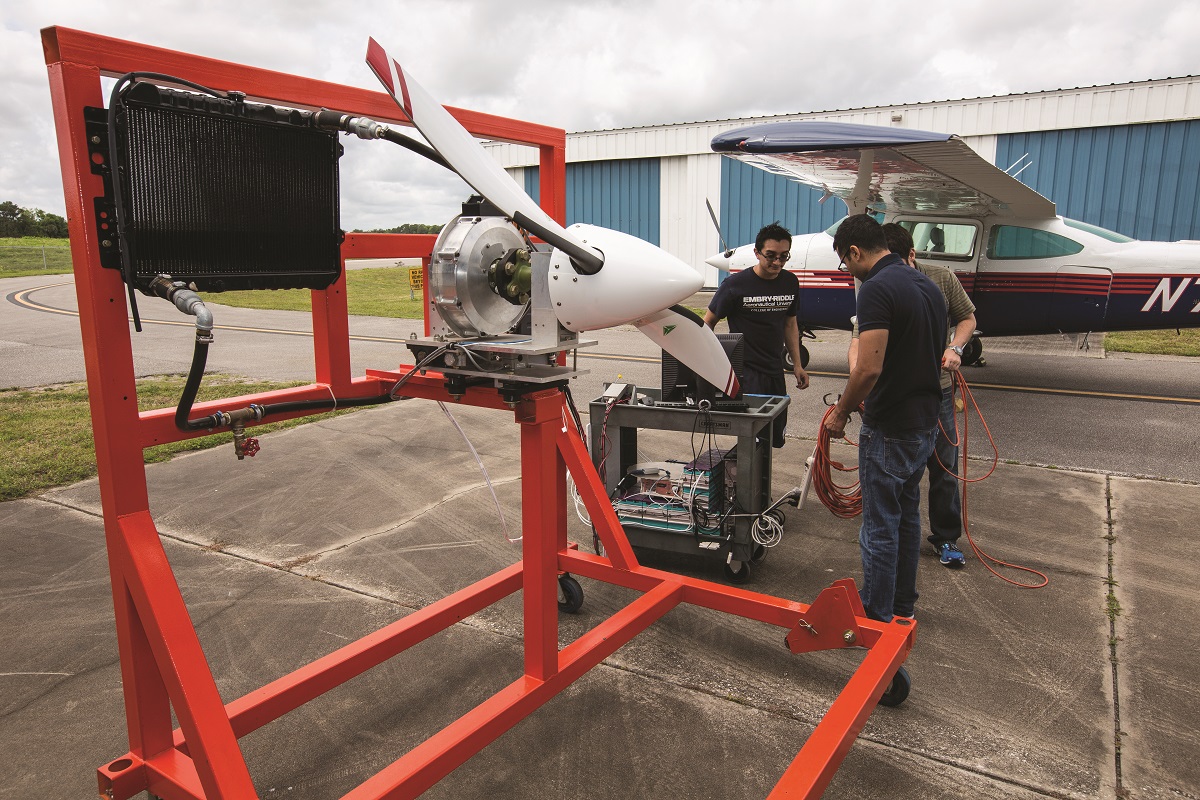Innovation Report: Accelerating Hybrid-Electric Propulsion

It allows the propeller to be powered by the internal combustion engine during takeoff when the most power is required and then switch to electric power at cruising altitude when power demand is lower. The innovative EcoEagle’s design prompted Embry-Riddle to file patent applications on both the hybrid aircraft parallel propulsion system and the novel clutching mechanism that was designed to shift between the two power sources. U.S. patents were issued to both in FY16 and have attracted the attention of aircraft manufacturers. To further strengthen the value of its hybrid aircraft intellectual property portfolio, in September 2015, the university filed its first foreign patent applications in the European Union, Canada, and Brazil.
Since the 2009 Greenflight Challenge, Dr. Anderson’s team has launched new research to redesign and improve the EcoEagle. For example, they are currently testing with the same batteries used by Tesla and are working to replace the standard air- and liquid-cooling systems with one that employs a cold plate with phase change material. (See Cool Technology for Hot Wheels on the previous page.)
The greatest limitation to using battery-powered aircraft is weight. Dr. Anderson explained, “If the lithium-ion batteries that are used in cars today were converted for aircraft, the weight comparison for a Boeing 787 Dreamliner would be 223,000 pounds of jet fuel vs. 4.5 million pounds of battery. “Unless there is a cosmic change in the battery, it’s just not going to work for bigger, faster airplanes,” he said. “It’s going to be a really long time before batteries weigh less than liquid fuel.”
In collaboration with Argonne National Laboratory, a consortium of aircraft manufacturing industry leaders is being assembled to provide expertise and research funding for Embry-Riddle whose goal is to design and test a hybrid turboprop aircraft. Anderson predicts that this project could be completed by 2019.
*This story was originally published in the InventER Annual Innovation Report 2016.
Download the full report. Learn more about tech transfer at ERAU. And visit the ERAU Innovation Facebook page.
